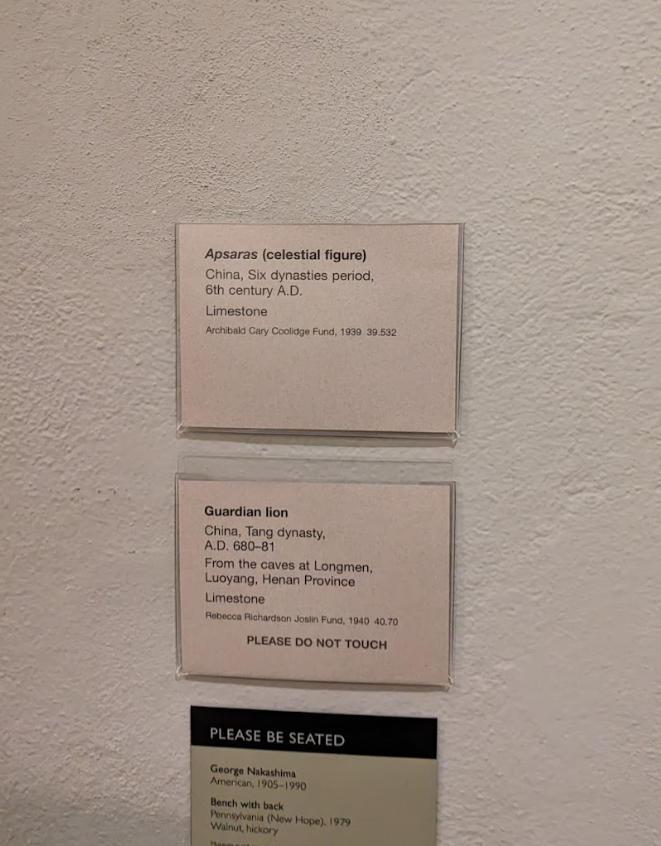Contextualizing (possibly) stolen art at the MFA


When we were walking around the ancient world exhibits, we noticed that the descriptions for many of the pieces in the ancient Chinese art exhibit were relatively sparse. Many of the names under the exhibits were white-sounding, and we were curious about how these items had gotten to where they are now from their original historical places.
Consider the Guardian Lion statue from Longmen, China. The description is very brief, and mentions that the piece was donated by the Rebecca Richardson Joslin fund. Looking a bit into her history we actually found out that Joslin was an MIT alumni, but there was little information about how the fund had even come to “own” the piece.
We ended up doing some more research and found this article on how Chinese artifacts typically got to the US. In fact, many of the artifacts from Longmen seem to have been plundered from the buddhist sanctuary at Longmen Grotto in the early 20th century because of interest from Western collectors. Eventually these ended up in the hands of C.T. Loo, a sketchy art dealer famous for illegally exporting significant cultural relics out of China. Likely these artifacts were sold to wealthy families and possibly changed hands a few times before ending up at the Joslin fund.
The history of this piece’s acquisition is quite interesting but it seems like the MFA hasn’t really done it justice. This might be partly because admitting the shaky ethical grounds behind the ownership of the artwork makes it hard to justify displaying (what amounts to) cultural theft. But if that’s the case then by just ignoring the situation we feel like the MFA is just shirking a hefty moral responsibility.